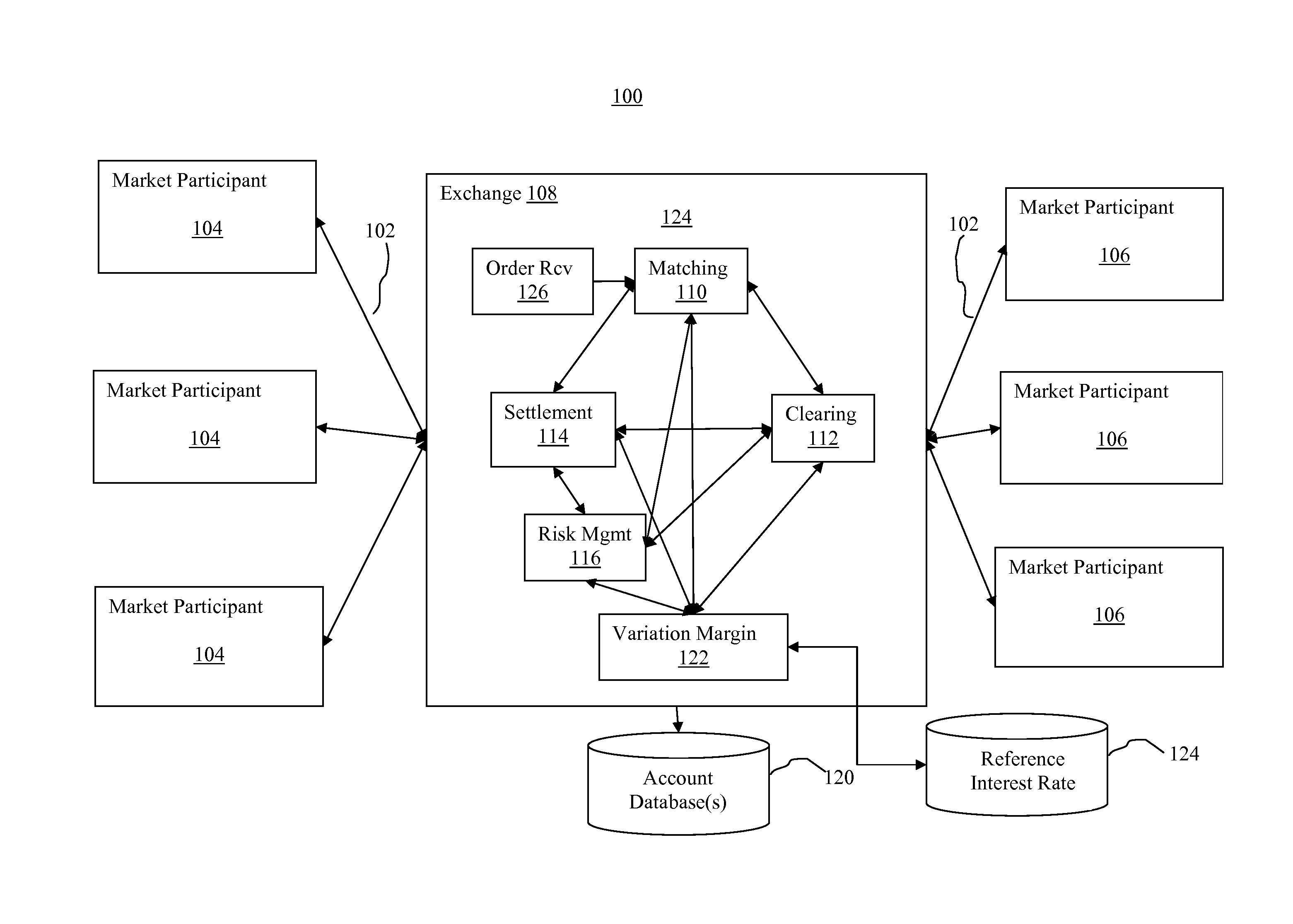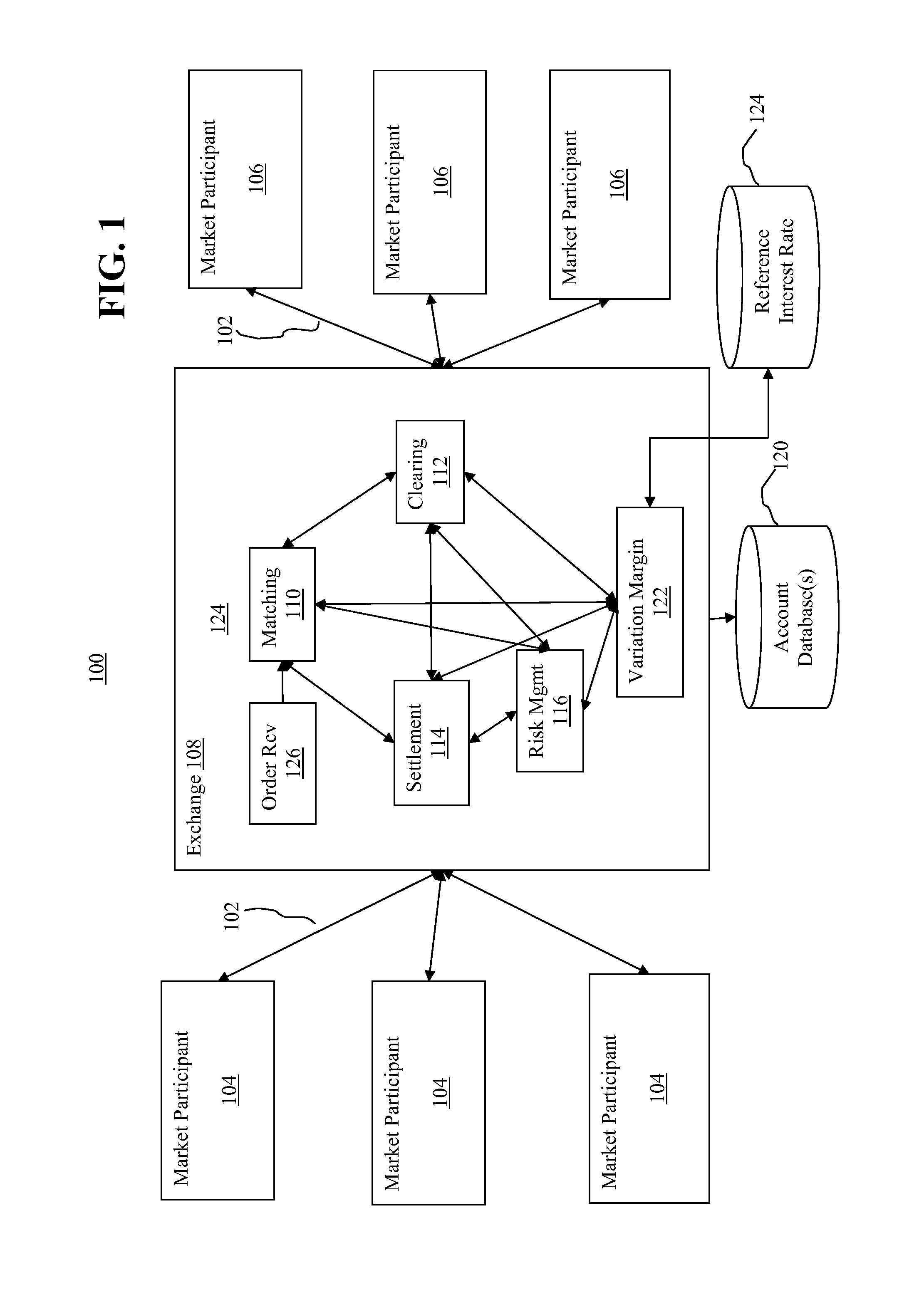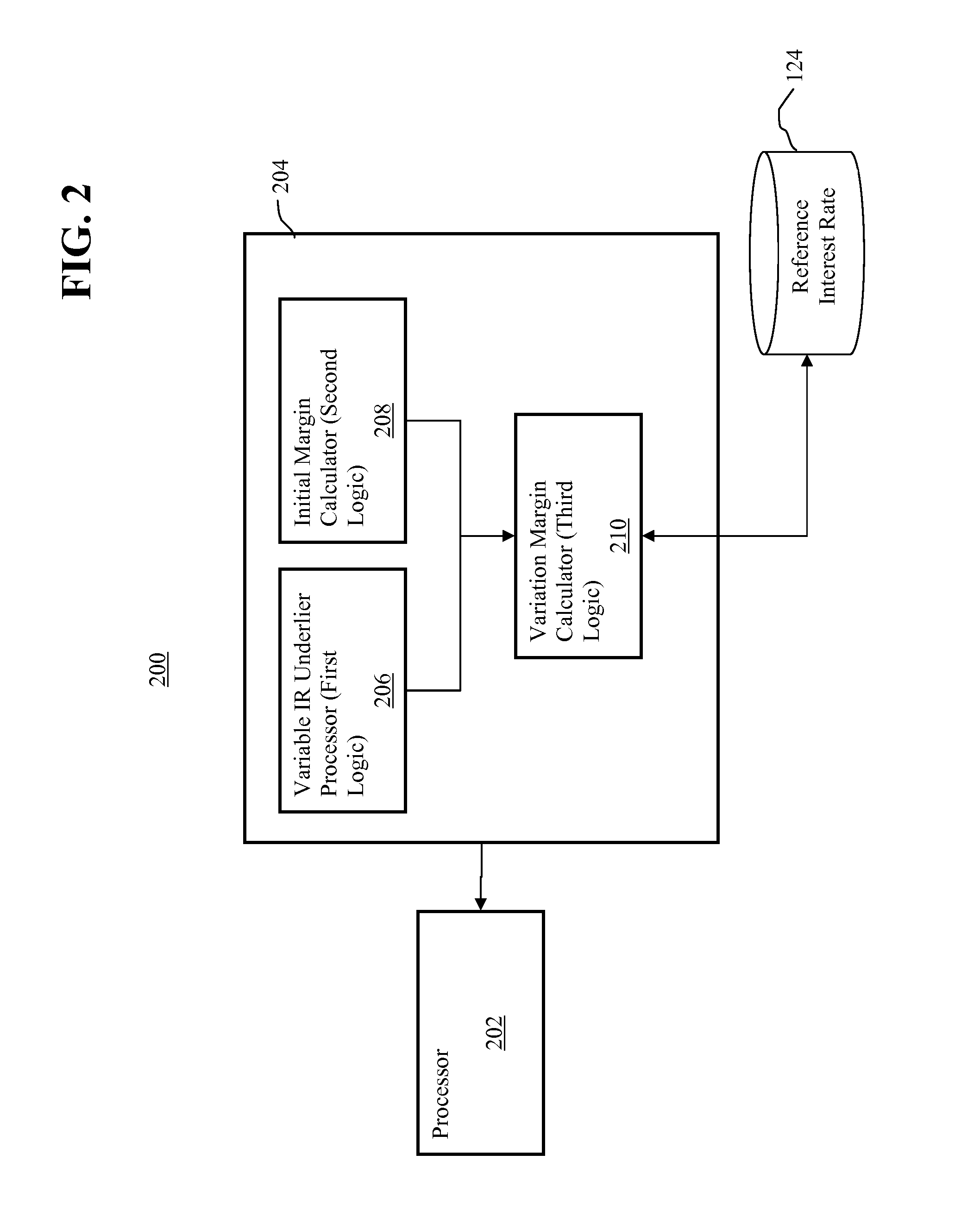Compound overnight bank rate accrual futures contract and computation of variation margin therefore
a futures contract and bank rate technology, applied in the field of compound overnight bank rate accrual futures contracts and computation of variation margin therefore, can solve the problems of commodity futures contracts, exchanges bear a certain amount of risk in each transaction, and she must incur the cost of rolling her position
- Summary
- Abstract
- Description
- Claims
- Application Information
AI Technical Summary
Benefits of technology
Problems solved by technology
Method used
Image
Examples
example 1
[0097]Suppose the contract price is quoted in terms of contract rate as defined above, with a minimum price increment of 1 / 10th of one basis point per annum. Assume a market participant purchases the contract at a price of 5.050 percent. Assume the daily settlement price for the same trading session is 5.000 percent. Determination of mark-to-market proceeds as follows:
TradePrice=5.050->ContractValue=89.63962points=100 / {(1+(1 / 360)(5.05 / 100))421×(1+(2 / 360)(5.05 / 100))5×(1+(3 / 360)(5.05 / 100))96×(1+(4 / 360)(5.05 / 100))15}DailySettlementPrice=5.000->ContractValue=89.74665points=100 / {(1+(1 / 360)(5 / 100))421×(1+(2 / 360)(5 / 100))5×(1+(3 / 360)(5 / 100))96×(1+(4 / 360)(5 / 100))15}Mark-to-Market=0.09703points=89.74665pointsminus89.64962points
[0098]Futures buyer collects, and seller pays, variation margin equal to:
$485.15=0.09703 points×$5,000 per point.
example 2
[0099]Suppose instead that the contract price is quoted directly in terms of price points as described above, with a minimum price increment of one quarter of 1 / 100th of a price point, equal to $12.50 per contract. Assume that market participants fundamentally value the futures contract as in the above example, with the only difference being that the contract is quoted in terms of price points, subject to the above-mentioned constraint on minimum price increments:[0100]Trade Price=89.6500 points[0101]Daily Settlement Price=89.7475 points[0102]Mark-to-Market=0.0975 points=89.7475 points minus 89.6500 points[0103]Futures purchaser collects, and seller pays, variation margin equal to $487.50=0.0975 points×$5,000 per point.
example 3
[0104]Assume the buyer of the contract on 2 May decides to hold their open position through close of trading the following day, 3 May. Assume moreover that the contract price is quoted in terms of the contract interest rate as in [0047], with the daily settlement price on 3 May equal to 5.010 percent, versus the daily settlement price of 5.000 percent on 2 May. Under the Exact Pricing convention described above, and with prices quoted in terms contract interest rate as described above, the contract daily settlement price on 3 May is re-expressed in price point terms in the same fashion as on 2 May:
Daily Settlement Price=5.010→Contract Value=89.73972 points 100 / {(1+(1 / 360)(5.01 / 100))420×(1+(2 / 360)(5.01 / 100))5×(1+(3 / 360)(5.01 / 100))96×(1+(4 / 360)(5.01 / 100))15}
[0105]Even if the contract interest rates that signify daily settlement prices for 2 May and 3 May were identical, the respective contract settlement values would differ, because the term to expiry has shortened to 778 days from 77...
PUM
 Login to View More
Login to View More Abstract
Description
Claims
Application Information
 Login to View More
Login to View More - R&D
- Intellectual Property
- Life Sciences
- Materials
- Tech Scout
- Unparalleled Data Quality
- Higher Quality Content
- 60% Fewer Hallucinations
Browse by: Latest US Patents, China's latest patents, Technical Efficacy Thesaurus, Application Domain, Technology Topic, Popular Technical Reports.
© 2025 PatSnap. All rights reserved.Legal|Privacy policy|Modern Slavery Act Transparency Statement|Sitemap|About US| Contact US: help@patsnap.com



